When it comes to the types and quantity of folk dances present, Punjab may be a very rich state. Folk dances come in a wide variety, with Bhangra and Giddha being two of the most well-known and well-liked. These days, many non-Punjabis participate in the pleasure and spirit of the Punjabi traditional dance as well, as you may occasionally see an EU, African, or Chinese face at various Bhangra competitions. You can check various forms of folk dances of Punjab with pictures in the below article.
Table of Contents
Important Folk Dances of Punjab
Punjab is renowned for its amazing cultures with its enthusiastic dance forms, you can check several important dance forms of Punjab in the below table.
| Dance Style | Description |
|---|---|
| Bhangra | Bhangra is a lively and energetic folk dance from Punjab, India. It is traditionally performed during the Baisakhi festival, harvest celebrations, and other joyous occasions. The dance involves vigorous movements, including jumps, leaps, and shoulder rotations. |
| Gidda | Gidda is a traditional folk dance performed by women in Punjab, primarily during weddings and other festive gatherings. The dance is characterized by its graceful movements, rhythmic clapping, and singing of traditional Punjabi folk songs. Dancers wear colorful salwar kameez (traditional attire) adorned with traditional jewelry. |
| Malawi | Malawi is a lesser-known folk dance from the Malwa region of Punjab, India. It is performed in a circular formation, with dancers moving gracefully in slow, swaying motions. The dance is accompanied by soulful and melodious music, often involving traditional instruments like the algoza (double flute) and the dholak (hand drum). |
| Jaggo | Jaggo is a pre-wedding celebration in Punjab where friends and family come together to celebrate the upcoming marriage. While not a dance style in itself, it involves a lively and vibrant dance component. A decorated clay pot, called the “jaggo,” is carried on the head of a dancer. |
Folk Dances of Punjab with Pictures
The vibrant youth of Punjab are directly reflected in the energy and enthusiasm of Punjabi dances. Punjab’s folk dances are heavily influenced by different traditions and dance forms, here you can check the folk dances of Punjab in the section.
Bhangra
Bhangra began as devoted to harvesting but evolved with industrialization, changing musical instruments, and evolving dancing patterns. Bhangra’s vitality, along with traditional Punjabi Dhol and Jhanjhar, has progressively spread throughout all Indian states.
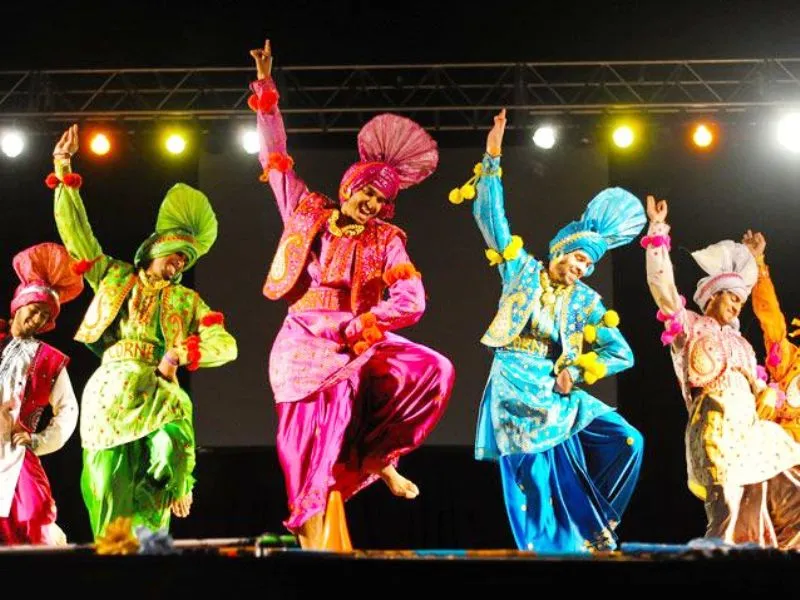
Giddha
Punjab’s young women played Giddha. The dance has a colourful surrounding and may be a display of women’s energy and vitality. The dance is frequently done at any social function. The costume is made of simple household items with a few light decorations. Giddha’s dance moves the shoulders and bends the lower body. Clapping also aids the dance as an instrument.
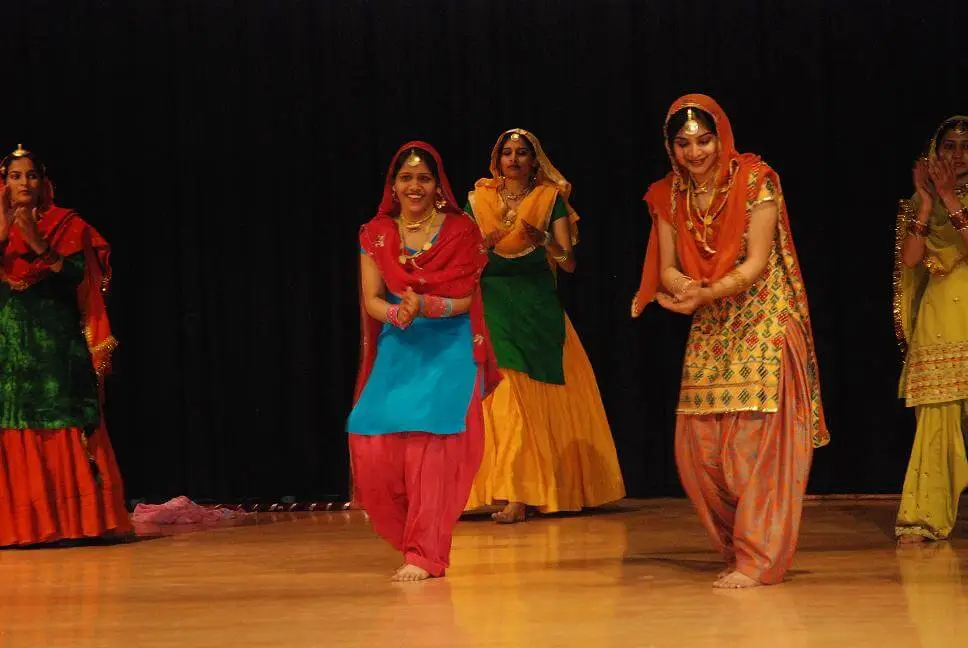
Dankara
This is a popular holiday dance known as the Gatka dance. Two men, each carrying a colourful stave, dance around each other to the beat of the drums and tap their sticks together. The dance is typically performed as part of a wedding reception.
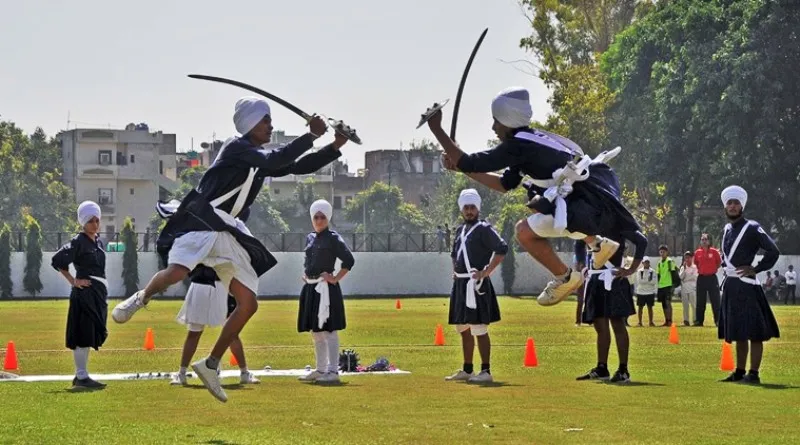
Luddi
This is frequently a triumphal disco, with individuals making various head gestures. A loose, basic shirt might be used as the outfit. The dancers stand with their backs to one side and their faces to the other. The body moves in a sinuous, snake-like manner. This dance form is also performed with guitar.
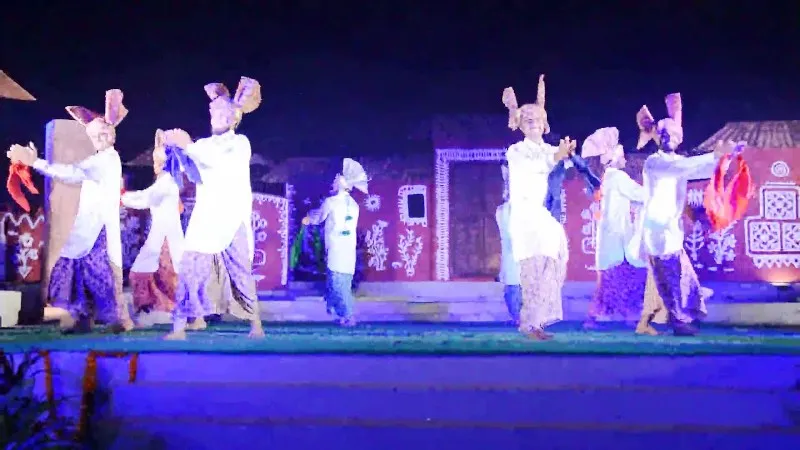
Jhoomer
Jhoomer is well-known for its passion and vivacity. It originates in the Balochistan and Multan regions. The speed of the dance is slow and rhythmic. Jhumur is derived from the term “Jhoom,” which means “gently swaying.” Usually, the center of the performance on love and other emotions. In the show, the “ecstasy move” is also referred to as the dance that recreates animal movements, field plowing, seed sowing, harvesting, and other such operations.
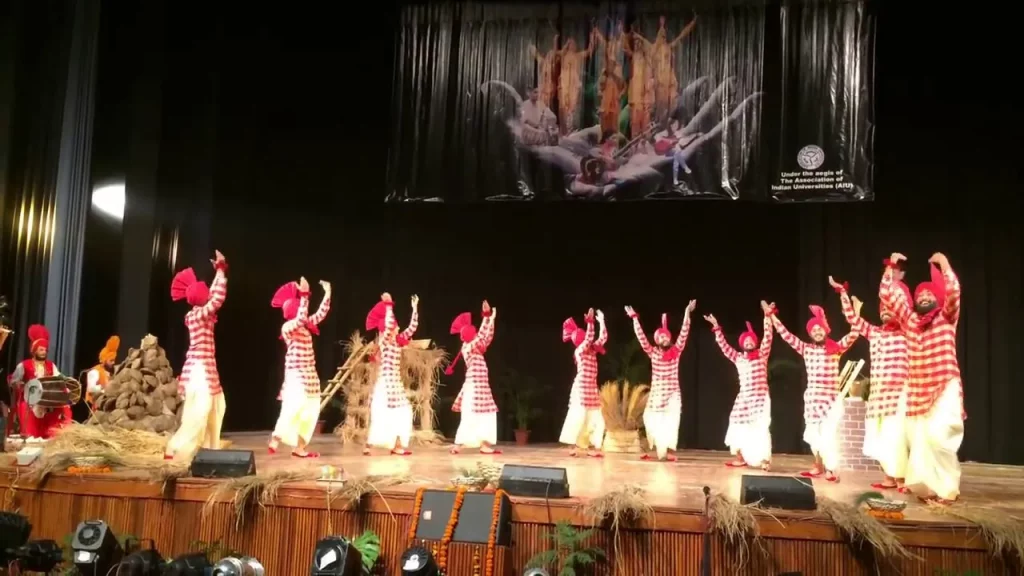
Malawi
Malawi Giddha is a traditional folk dance in Punjab, primarily performed by bachelors. It first appeared in the districts of Bathinda, Muktsar, Ferozpur, Faridkot, Mansa, Sangrur, and Patiala. The dance employs a variety of musical instruments, including the Chimta / tongs, a traditional South Asian musical percussion instrument commonly heard in popular Punjabi Giddha and Bhangra music. Dholaki is another instrument utilized in the performance.
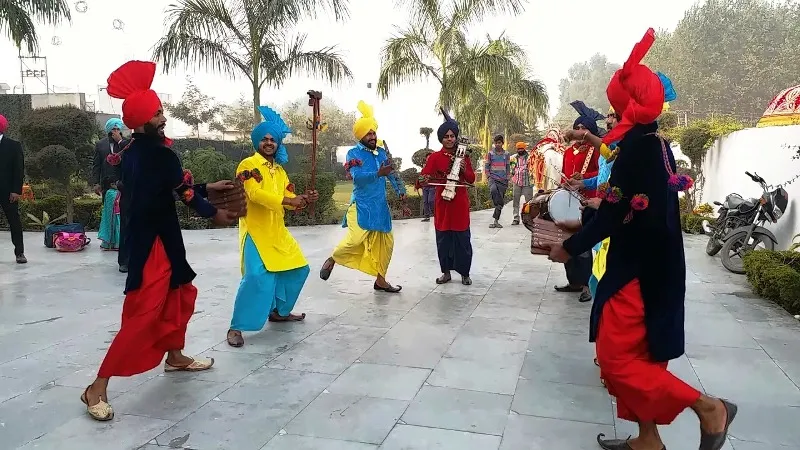
Jaago
The literal meaning of Jaago is “wake up!” When there is a marriage in the family, the girls dance through the village streets, holding a pot (gaggar) decorated with lit candles and singing Jaagu melodies. The song themes are societal, and the music is usually accompanied by a touch of mocking, mostly directed towards elders.
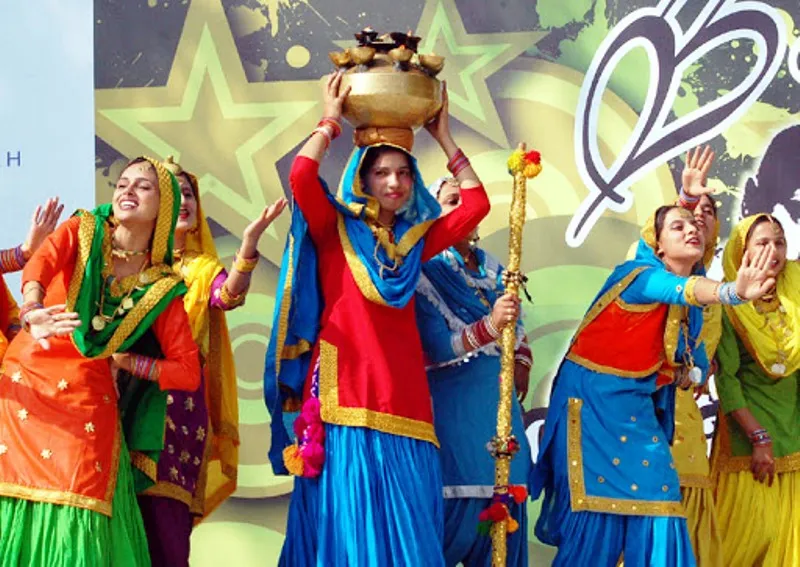
Folk Dances of Punjab FAQs
Bhangra is a lively and energetic folk dance form originating from Punjab, India. It is performed during various celebrations and festivals like Baisakhi and weddings. Bhangra is characterized by vibrant music, rhythmic clapping, and high-energy movements.
Giddha is a traditional Punjabi folk dance primarily performed by women. It involves singing, clapping, and rhythmic movements, and it is often performed during weddings, festivals, and other joyous occasions.
Malwai Giddha is a regional variation of Giddha, specific to the Malwa region of Punjab. Similar to Giddha, it is performed by women and features singing, clapping, and graceful movements.
Jaggo is a pre-wedding ritual in Punjab, where friends and family members participate in a lively procession. They carry a decorated earthen pot (jaggo) filled with oil and a cotton wick on their heads while dancing and singing.
Yes, these folk dances are still quite popular in Punjab and among Punjabi communities worldwide. They are an essential part of cultural celebrations and social gatherings.

